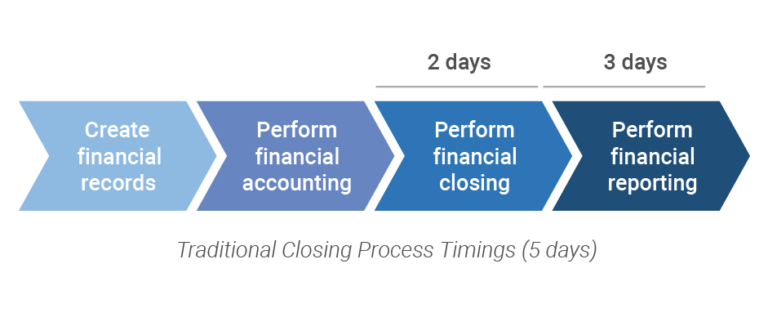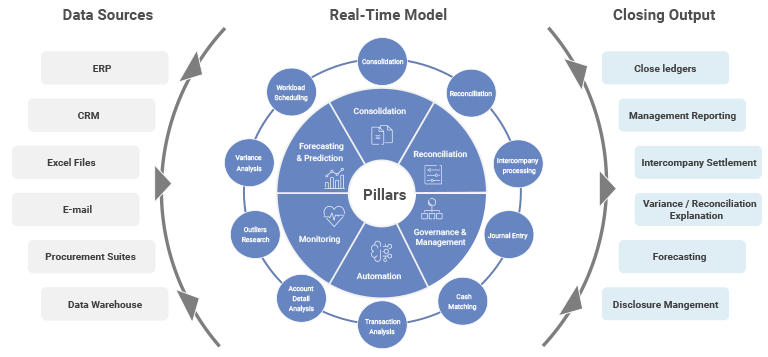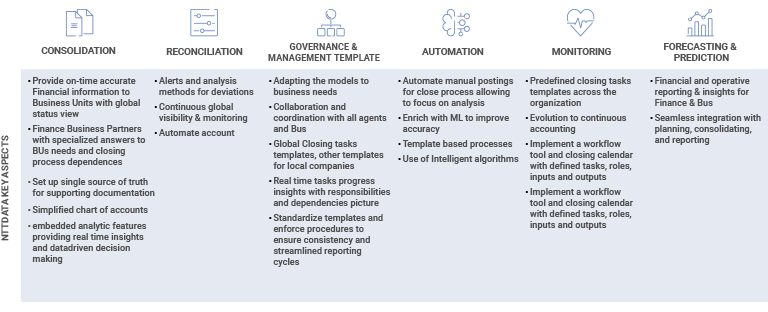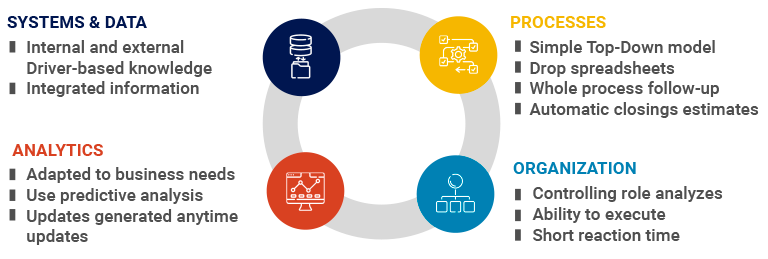The current environment of uncertainty and volatility requires companies to generate information for decision-making in a more agile and efficient way.
One of the heaviest processes for companies and that tends to take long time, is the closing process, critical for decision-making.
Closing Process Traditional approach
The traditional closing approach is a linear process that generally takes a minimum of 5 days to complete and strictly adheres to the financial calendar.

Studies show that:
- Only 38% of organizations close their books in five or six days.
- Outstanding 62% justify a slower close to growing business complexity and increasing regulatory commitments.
The traditional monthly close that has been used by companies for a long time, is based on the following characteristics:

The problem with this approach is that by the end of the month, everything becomes cluttered, giving space to error, causing labor-intensive hours to rectify and mainly, producing a delay in the generation of financial information.
Evolution to a continuous close
Instead of closing the books at the end of each month, why not close whenever you want? This is exactly what happens in a continuous close.
To achieve continuous close, there are two main goals:
- Real time information: having the transactional information available, reconciled, and consolidated in real time.
- Automatic forecasting: Be able to predict the account balances until the end of the month in a automate and agile way.
A real-Time closing model must be based on a set of pillars that ensure a seamless flow of information from the data sources to the closing Outputs.

In order to achieve a continuous close, NTT DATA tackles the following key aspects for each of the pillars …

… and help companies equip themselves with the following capabilities, working with a holistic view:

What are the main benefits of the continuous close?
- Gain in process efficiency to focus on analysis tasks. Due to an average time spent reduction of 30% to 40% and the possibility of performing automatic close estimates.
- Improving decision making: A on demand close allows having the information available earlier and faster to visualize, including access to critical financial data.
- Higher quality information. Due to having an integrated and shared data model between departments.
At NTT DATA Digital Finance we guide companies towards its continuous close mode, by helping in the functional design, the selection of the right tools and the implementation of the solution.










